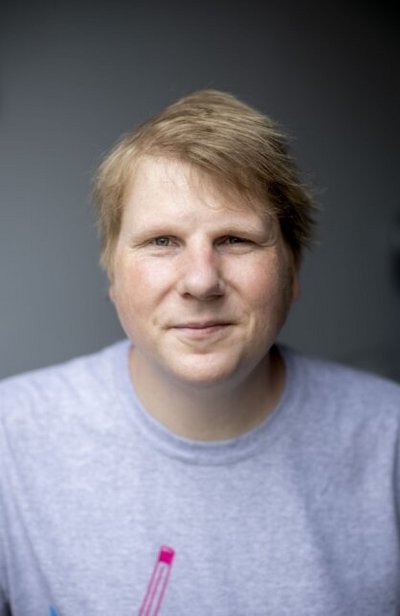Founder and Lead Creative Technologist of tactile.news.

You and your team at tactile.news try to rethink journalism through the possibilities of technology, Internet of Things applications and AI: Where do you see the greatest potentials of journalistic innovations and what aspirations do media companies and public broadcasters have when they work with you?
I see the greatest potential in leaving things behind. When you start with new technologies, you also have to abandon others. These are the things that create space in your schedule: Stop printing newspapers every day, stop building e-paper apps, stop filling every social network with your content, stop writing new articles and produce content to fill space. All of a sudden there is room for innovation.
Think instead about worthwhile infrastructure: Start establishing new, fast channels for audience dialog via messengers such as Signal, Telegram, Whatsapp, Threema. There is hardly any infrastructure for these dialog channels, yet these are the services that are used by your audience day and night.
Build an infrastructure that collects its own sensor data. Self-collected data makes the difference in an ocean of remixed data from many sources. Use your own collected data as the organic standard: It’s not perfect, but unmistakably is your own. This could be data on urban trees, pedestrian traffic or air quality. I even believe in smell data from the city!
There is a great potential in the automation of workflows using AI to improve quality. This could be systems that translate your sensor data into synthetic spoken language in realtime, for example. In our Pflanzendialoge ("Plant dialogues") project we are working on the Internet of Plants, but we are also looking at data from agriculture to ensure food transparency.
I also believe in highly personalized newsletters. Many people in the media system have realized the need for a radical pivot. A pivot to self-produced projects using technology.. But only a few have the courage to overcome routines and make a change. There is no reason to be afraid of failing. You can only learn and try better.
With the rapidly growing number of new technologies and the ever shorter life cycles, infrastructure is a risk. We at tactile.news are specialised in prototyping testable infrastructure in just a few days. Give yourselves a day or two to do things differently!
How do infrastructures matter for citizens?
Journalistic infrastructure is highly significant. Traditional media have lost their way to reach many audiences. You have saved the route of transportation for information but only few are still traveling on it. Or, worse, you never built the route at all. We need to change the system of journalistic mobility. We need to develop technological paths to where our audiences are. Prototypes are cheap. But they are only a basic prerequisite for successful products. A prototype costs 3€ or 300€. The development of software product costs 300,000€ at least.
But it's worth it: we use technology to open up new perspectives on the world. That is why I became a journalist. As pioneers, we cut our way through the thicket of new possibilities and old routines. To give just one example: the dialog software that tactile.news developed is called 100eyes. It is designed to reach people wherever they are. They can use the messenger of their choice, regardless of whether they use Whatsapp, Signal or Telegram. Readers love it. And they respond honestly and with real stories. It helps to build a space of trust for public dialogue.
AI could mean that everyone receives information in the form and context in which they need it: whether as audio or longread, as a game, at a contact point in the city. But AI also needs good user interfaces. To this end, we are developing pieces of dialog furniture for urban spaces, such as our dialogbox and the dialogbench. Journalism is not at an end. It's just starting to get really exciting.
How should knowledge about infrastructures be communicated and what role can journalists, researchers or public officials play?
Journalism often tries to land on the moon with paper airplanes. A worthwhile mission but it is more successful with a rocket and a lander. Building the basis, testing the devices for years, is not rewarded in journalism. Journalistic infrastructure has a niche existence in the daily business of reporting. Yet it is needed to work in an organized, regular and fast manner. That’s why we need to develop it!
In our projects we reported with sensors live from the inside of a cow, from inside the superorganism beehive, from the soul of a meadow. We created our own sensor and reporting infrastructure. I believe in open-source and collaboration. We need more technology labs. In the past, the media didn't have a research and development department for their own infrastructure. Now they need one.
There is a fundamental lack of institutional support for digital infrastructure. We need intelligent funding and long-term financing. We need funding for database systems to process large data leaks, for journalistic infrastructure for the direct sale of our work. And we need funding for tools to reach new areas of the connected world and engage new audiences. There are so many stories waiting out there!